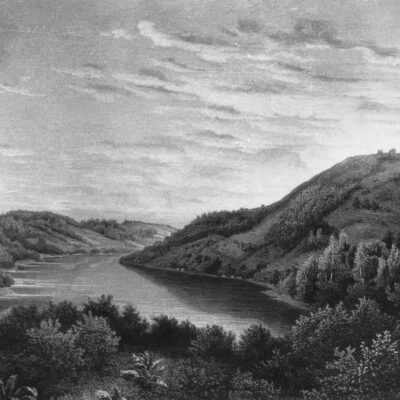Cultural History Nature rezerve “Korneti – Peļļi” The surroundings of the nature reserve are rich in cultural monuments. In its territory there are three national cultural monuments – the Drusku castle mound, Zeņģu and Tilmaņu ancient burial sites, one cultural monument of a local significance – Jāņkalnu medieval graveyard. The Drusku castle mound is located on a rampart-type hill on the steep wood-covered northern shore of Lake Pilskalna. From that side the Drusku castle mound rises about 90 metres above the level of the lake. None of the castle mounds in Latvia has such a steep and high slope. The opposite slope of the castle mound is less steep though it also reaches the height of 35 metres. The north-eastern part of the hill is quite inclined and vague, but several metres below the level of the plateau, the remains of a 0.5 m deep ditch and bank are visible. In earlier times the hill was ploughed up therefore all the ancient fortifications were partly levelled off, and the cultural layer from the castle mound plateau which is approximately 130 m long and 50 m wide has been moved to the sides. It is possible that the entrance into the castle mound was from the north-eastern side. Even nowadays a path goes up the hill there, though it was more used at the time when the plateau of the castle mound was used for social gatherings. The crockery chippings found there indicates that the Drusku castle mound was inhabited in the 11th -12th century. There is a wonderful view from the Drusku castle mound over the surroundings. The hill was described and pictured in the book «The Album of the Baltic Sights» in 1864. It has been mentioned by the writers, E. Zālīte and J. Liepiņš. In 1923, E. Zālīte, retelling the tale of the Drusku castle mound, wrote: «It has been told that in the very western corner of the hill, on the highest place, there was an ancient Latvian castle. That is why there is the name – Pilskalns (Castle Hill). Not far from that place there is a small hollow. The tale says that in earlier times there was the Miracle spring. «Once a woman rinsed her baby’s clothes in it. The spring got angry for such a lack of disrespect, rose up in the sky and flew to Cēsis». Next to the castle mound, there is Dzērves Hill with an open-air dance place on the top of it. According to some information, there were four God’s oak trees on Dzērves Hill where people brought flowers in ancient times. The archives of the Board of Monuments keep a letter of R. Millers from 1925, in which he wrote: «The Kornetu manor dancing-party participants made a fire in the hollow of the old oak tree to light up their dance place. The tree was burning for five days». It seems that the rest of the God’s oak trees had the same fate. In the opposite direction from the Drusku castle mound at the Zeņģi homestead, an ancient burial place conformable to the castle mound has been ascertained, but on the other side of Lake Pilskalns, between the Vosvu and Šķepastu homesteads, there is God’s Hill with Māra’s Footprint Stones. The excerpts used in the text are from the book by Juris Urtāns «Castle Mounds in the Northern Vidzeme», 1981

